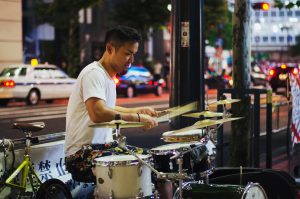
The first time I sat down to play a drum set, the thing felt foreign. I wasn’t sure which way to face my torso or how high to adjust my seat.
I quickly began experimenting with the angles and relationships between the drums to make it feel better to play on.
You’ll find the way you adjust your set will vary according to your ability to play, as well as your comfort. And just like how you arrange you drum set will affect your play, so too will the items you choose to include in your set.
Here I’ll walk you through the typical parts to consider when building your own drum set. We’ll cover everything from the common types of drums included in a kit, to common cymbals, drum sticks and drum seats.
In the interest of getting acquainted with the standard kit, I’ll omit other percussion instruments which can be added to a set, such as bongos, congas and certain other types of toms.
Drums
When you purchase a drum set, the standard kit will generally include five drums: a snare, a bass, two rack toms and one floor tom. Let’s cover each one individually.
1. Snare drum
The snare drum is a central part of the kit. Along with the bass drum, the snare drum has been used classically for civic and military expositions.
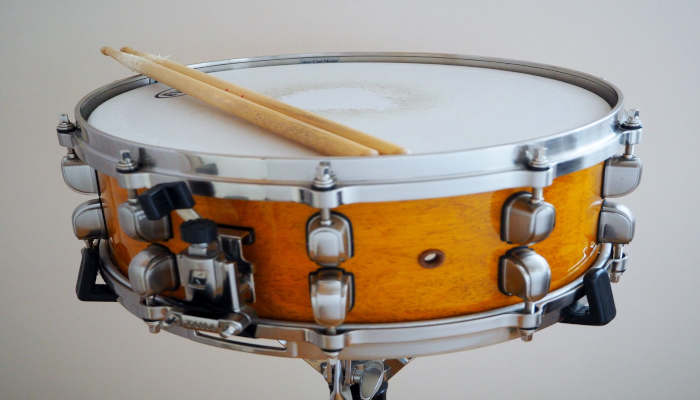
It has a distinctive cracking sound when struck because of a rattle, called a “snare”, made of metal wires that run across the bottom head of the drum.
The steel rattle is typically locked tightly against the drum head and as a result responds to the slightest vibration. This sensitivity makes the snare drum the most dynamic part of the kit and different musical styles have adapted the different qualities of its sound to give it a unique character.
The snare is the reference for any drum fill (a “fill” is a riff, or musical passage, between breaks in a song). You can also sharpen your skills by practicing the various rudiments devised specifically for the snare.
How much should you expect to spend on a snare drum?
A beginner snare drum can cost anywhere from $50 to $100 while higher end drums can cost $500 to $1000.
But the snare is prominent in Western music and will likely significantly shape the overall character of your sound. So investing in better quality ($100-to-$300 range) may be a good idea.
2. Bass drum
Often referred to as the heart of the drum set due to its size and tonal depth, the bass drum, or kick drum, is the largest of the drums on a standard kit.
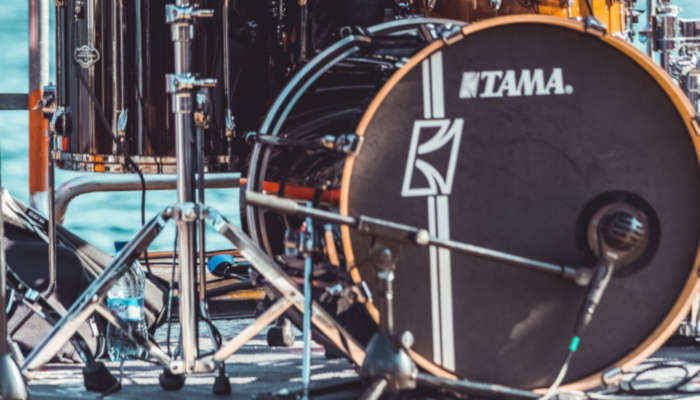
If the snare drum is known for its high cracking sound, the bass drum’s most notable characteristic is its low, booming sound achieved by striking the head with a foot pedal.
You might consider the bass drum the second most important in the standard kit. The bass and snare drums form the basis of most beats because they’re played together interchangeably to mark time in a composition.
The bass drum sits on the floor, typically over a drum rug, and is held in place by two short diagonal legs on either side. The standard size for a bass drum is 22” in diameter and 18” deep.
The mechanics of the pedal allow for the “beater”, usually made of plastic with a soft but dense surface, to strike the center of the head at high speed and with large surface area.
How much should you expect to spend on a bass drum?
The cost of a good beginner bass drum starts around $200. Test out different bass drums before buying one, as the tone and depth will vary by size and shell construction.
Bass drums are typically sold in a “pack” which may include three, four or five drums. But if you wish to purchase only the bass, it will most likely be a higher-end drum which can range from $300 to $1,000.
3. Tom-tom drum
Now that we have our bases (and snares) covered, let’s move on to a type of drum that can add even more depth and diversity to your beats.
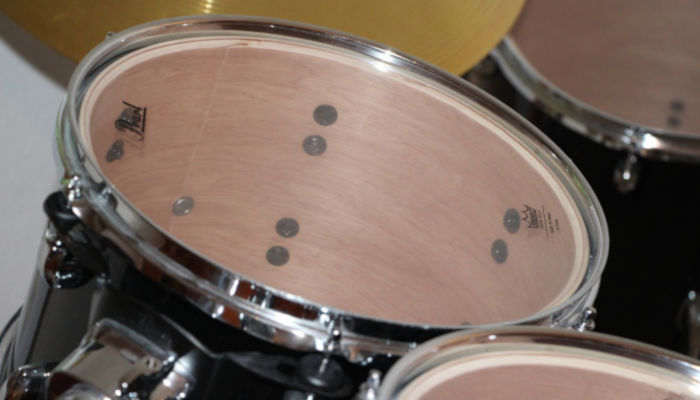
A five-piece drumkit will typically include two “rack” tom-toms. These are mounted above the bass drum, either on a steel fork (rack) attached to the bass drum shell or with a clamp attached to a cymbal stand. A larger “floor tom” accompanies the set beside the snare drum, and three adjustable, steel “legs” support it.
The tom-toms produce a deep punchy feel and are tuned differently according to size—smaller toms tuned higher and larger toms tuned lower. The effect is a cascading tonality starting with the higher-pitched tom on the top left and moving across to the floor tom.
I always found the toms helpful (I learned on a five-piece set) because I could incorporate them when practicing drum fills, which pushed me to improve my dexterity.
You’ll find that drumming is an immersive act. And the tom-toms challenge you to develop greater fluidity and grace when playing around the entire set.
How much should you expect to spend on a tom-tom?
Much like the bass drum, tom-toms are standard on most kits and can cost around $180 or more when bought individually. Some higher-end sets tend to include only one rack tom and a floor tom along with the bass drum.
Tom-toms are not essential in many genres of music for composing drum beats. But they can offer greater diversity to your playing.
Cymbals
Drums can be powerful markers of time. But keeping time with only drums can often make music monotonous. Space is an important part of any composition. Cymbals can be used to keep time while spacing out the notes on bass and snare drum.
Here we’ll explore the cymbals which accompany the standard kit, including hi-hat, ride and crash. In covering the basics, we won’t get into any of the various “effect” cymbals which are used sparingly, such as china or splash cymbals.
Like drum packs, beginner cymbals are commonly sold in packs that include hi-hat, ride and crash. Higher-quality cymbals are sold individually.
4. Hi-hat
The hi-hat is composed of two cymbals cupped together and held in place by a clutch and seat. The lower cymbal rests on the padded seat while the higher cymbal is held within an inch above by a clutch mounted on a steel rod that passes through the cymbals.
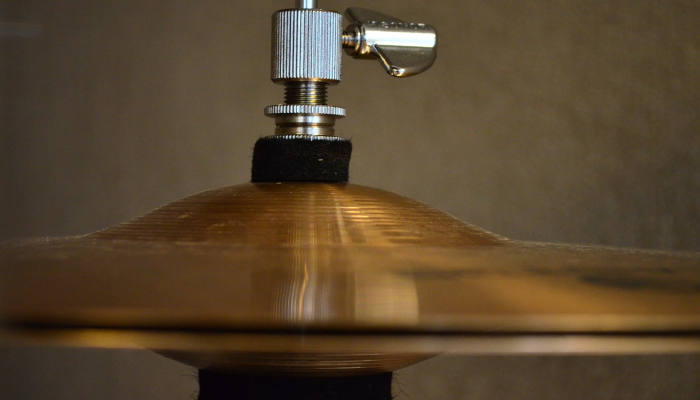
The hi-hat is operated by a pedal, which when pressed, pulls the steel rod down to which the high cymbal is attached by a clutch. The clapping of the cymbals produces a crisp, high pitch and can be played using only the foot pedal, the stick or both interchangeably.
As you become acquainted with your setup, a right-handed player will find their right hand is best suited to play the hi-hat while their left hand is better suited for the snare drum (or vice-versa for left-handed players).
This is the natural position on a set, and for this reason the hi-hat is the most important of the cymbals for your kit.
How much should you expect to spend on a set of hi-hats?
A beginner set of hi-hats can cost around $10. But it is easier to find a much better-quality set for around $150 to $200.
5. Ride
The sharp pitch of the hi-hat can become too aggressive depending on the mood of a composition. And you may favor a warmer, softer tone with more resonance.
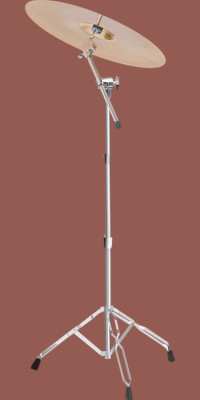
As its name implies, the ride cymbal produces a sound that “rides”, or resonates, along a bar of music. The initial effect can be a high or low “ping” which can vary greatly depending on the cymbal’s size and thickness. The aftereffect is a drawn-out resonance more suitable for slower, mellower music.
The standard placement for a ride cymbal is to the right of the snare drum—just above the floor tom and between it and the rack tom on the right. The ride cymbal is typically mounted at the same height as the hi-hat, but this can vary by personal preference.
The ride cymbal offers you another tool for marking time in a less-aggressive, more drawn-out way and lets you experiment playing at different volumes.
How much should you expect to spend on a ride cymbal?
A beginner ride can cost around $100. But I’d recommend trying out different rides, since the sound can vary depending on the quality.
It may not be essential for starting out and learning to craft beats. But the ride cymbal can greatly improve your style, as you’ll need to adjust your drumming to fit the particular sound of the ride.
6. Crash
As you become a more sophisticated drummer, you’ll find there are different ways to handle the transitions in a musical composition. Many drummers will incorporate fills during these changes in melody, which are accentuated by a crash. The crash cymbal signals importance or change.
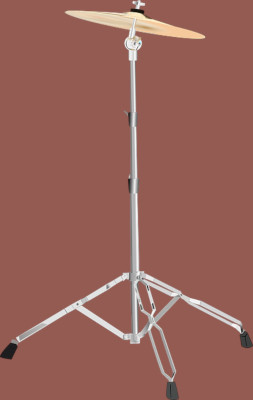
Compared with the ride, which resonates long after being struck, the crash is quick and loud—perfect for introducing a different drum beat or melody.
This cymbal is mounted on its own stand high above the rest of the drums to keep it from colliding with another cymbal or a drum as it swings.
The standard drumkit has one crash cymbal. But you may choose to use two crashes of different sizes and pitches, on either side of the bass drum to give your beats more color.
A crash will feel like a natural element in your playing as transitions begin to appear in your compositions.
How much should you expect to spend on a crash cymbal?
Like the hi-hat and ride cymbals, a good beginner crash starts around $100. And this is another cymbal you’ll probably want to try out before buying, as tone can vary widely across different crashes.
Kit hardware and accessories
No drum kit is complete without a few more easily overlooked, but still essential, accessories.
Here I’ll omit niche types of accessories, such as mufflers, sizzlers and pads. Instead, let’s look at a few pieces of hardware that almost any drummer would consider necessary for playing.
7. Sticks
Drum sticks come in different thicknesses, wood types and tip types.
All-wood sticks produce a warmer tone, while plastic tips produce a higher pitch. The sound differences are most apparent when striking cymbals, as the tip type and weight of the stick will produce distinctive differences in the pitch and resonance of the cymbal.
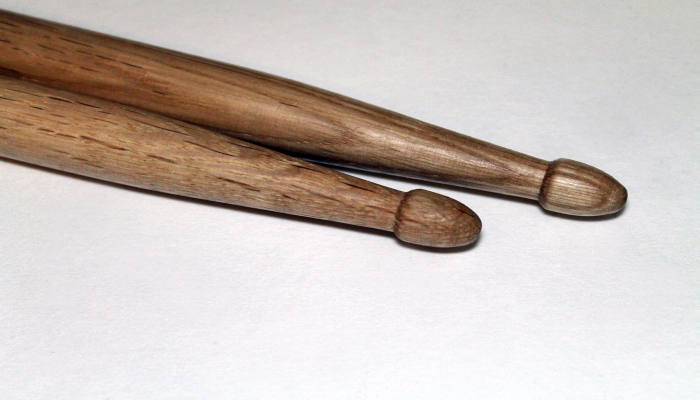
Thinner, lighter sticks are commonly used for quicker playing, often with less force resulting in lower volume, such as in jazz music. Heavier sticks are more common for rock and funk music, which require louder sounds to match the other instruments.
How much should you expect to spend on sticks?
An average pair of sticks will cost you around $12. You may want to stock up while you learn to play, as you may wear out the sticks faster until you learn the proper way and angle to hit your drums and cymbals.
Be sure to test out different sticks by playing with them. They may feel good by themselves. But when playing forces you to maneuver around a set—from hi-hat to tom-tom to cymbal to snare—you may find the pair you initially thought you liked may not be the best fit.
8. Drum seat
The drum seat, a.k.a. the “throne”, is the control center from which you operate your kit. The height and sturdiness of the seat directly affects how fluid your movements are.
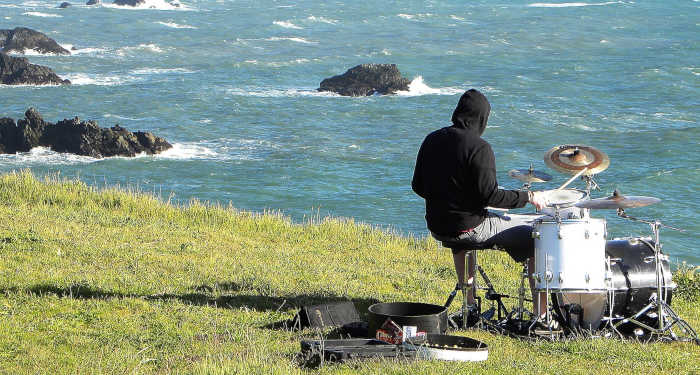
If the seat is too low, your sticks may strike the rims of your drums more than the drum heads. If the seat is too high, your pedaling may not produce the desired fullness of sound from the bass drum or hi-hat.
Drumming is a tumultuous act. Most drummers have a tendency to bounce up and down as they play. So you’ll want a durable seat that can handle that kind of movement.
When you buy a drum seat, choose stability over comfort. While both are important, being able to rotate your body from a stable point is essential to proper drumming. And I would gladly sacrifice comfort for a seat with rugged legs and hardware.
How much should you expect to spend for a seat?
A good beginner throne can start at around $100. But I’d suggest investing about $50 more for a better-quality seat.
Look for one with heavy steel legs with thick rubber caps on the ends. This will help ensure the seat stays in place and doesn’t slide around on the floor while you’re playing.
9. Stands
Hold your drum stands to similar standards you apply to your drum seat. Rugged stands ensure the impact of your playing won’t cause your cymbals and drums to slide off, forcing you to reach further in your playing and putting added strain on your back.
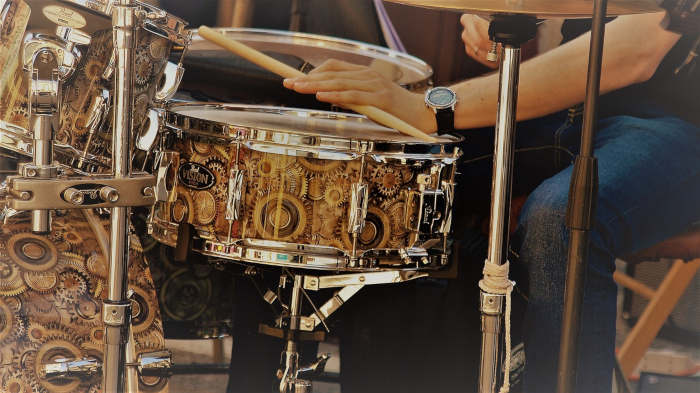
A standard kit will include the basic stands for hi-hats, snare drum, ride and crash cymbals. Some drummers may choose not to have their tom-toms mounted on their bass drum. Instead, they’ll often buy a separate stand for a single tom-tom drum.
How much should you expect to spend on drum stands?
The stands included with a set are usually adequate for a beginner drummer, since you most likely won’t be playing heavily enough to push your drums away. Remember that getting the proper sound out of your equipment depends on using stable stands to provide necessary support.
If you’re not yet worried about your drums flying away from you as you play, you can usually buy simpler stands to learn with for around $25. Sturdier stands can cost between $50 and $100.
There are also many accessories you can add to stands which can reduce the resonance and movement on cymbals. And some of these can also serve as mounts for tom-toms. These parts will become more important as you develop specific sounds preferences for your drums and cymbals.
Diagram of drum set parts
The below diagram showing a typical five-piece drum set labeled with each of its parts.
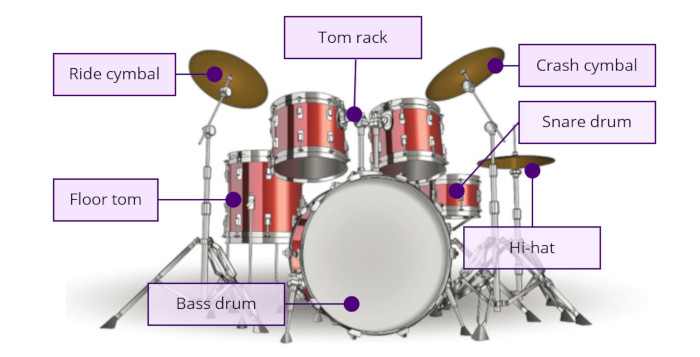
A drummer’s kit reflects his or her personal playing style. And although this is the most popular arrangement, an experienced player will organize their setup in a way that allows their body to fit into it like a glove.
This level of customization takes time to develop, but with enough practice and dedication, the drummer can transform his or her standard set into something truly unique.
Conclusion
A standard, five-piece set will include all the drums and cymbals we explored here. Sticks and a seat are also typically included. But keep this general rule of thumb in mind: the more drums, cymbals and accessories included, the lower quality they tend to be.
As you begin to research sets and prices, you’ll find the higher-quality, more expensive sets are rarely sold in complete sets.
The $300 price point offers everything you need to get acquainted with the feel of a full five-piece set. Some brands that offer these kits are Sound Percussion Labs (SPL) and Rogue.
If you’re serious about learning drums, I suggest researching some of the most well-known brands in the industry, such as:
- Pearl
- Tama
- DW
- Ddrum
- Gretsch
- Ludwig
These brands make really good quality standard kits starting at around $400-$600 that sound great and will last much longer than most less-known brands.
I would also add a good starter cymbal pack such as Sabian B8’s or Zildjian ZBT’s, which include hi-hat ride, and crash for $200.
While more experienced players may choose to simplify their set, it’s a good idea to take advantage of the drums provided in a five-piece set so you can familiarize yourself with the different tonalities.
Later, you’ll be able to decide for yourself how eccentric or minimalist you want your set to be.
